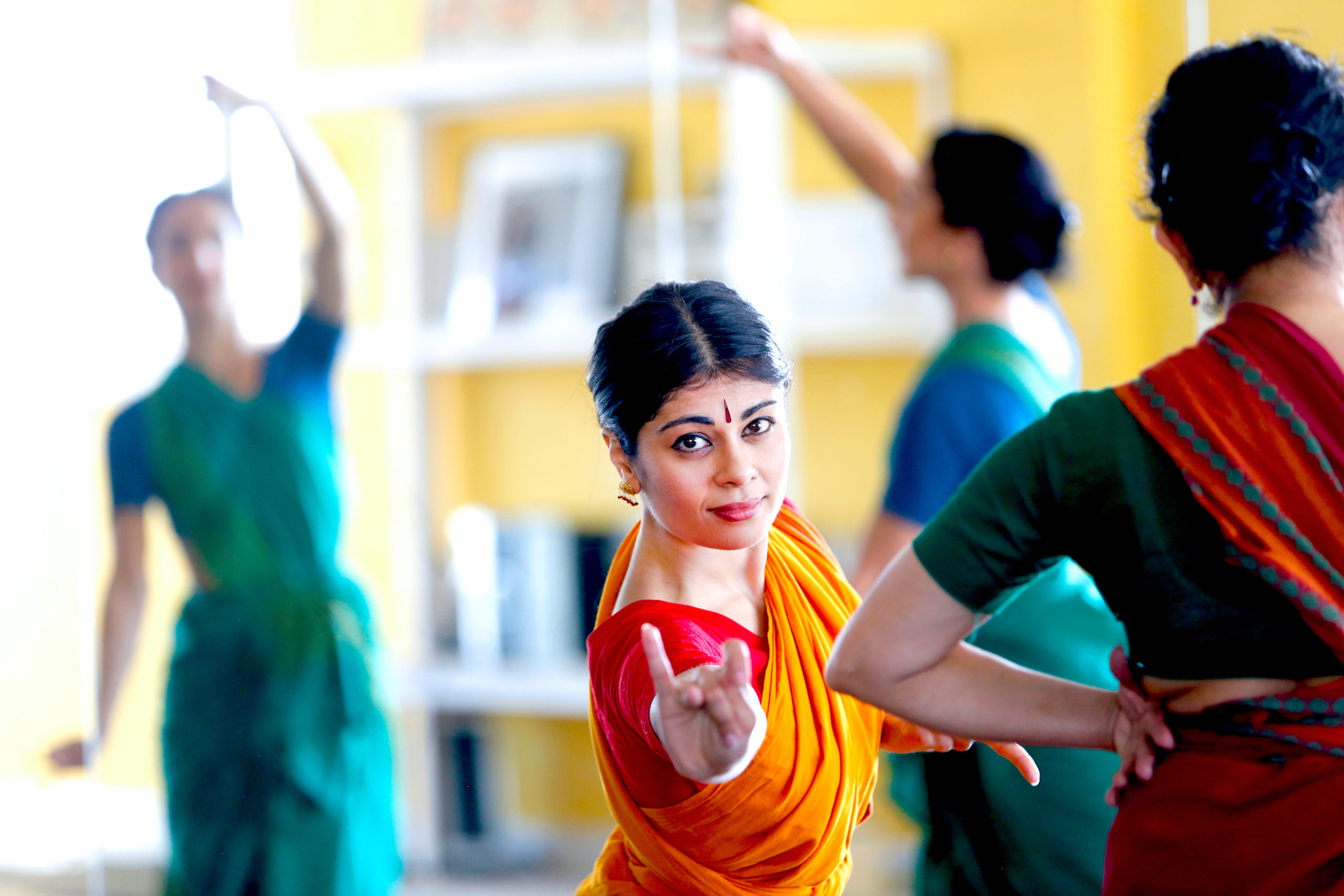Ashwini Ramaswamy on Her New Genre-Expansive Work, Invisible Cities
Ashwini Ramaswamy boldly explores what seemingly disparate genres of dance can do when performed side by side. First, there was her 2019 Let the Crows Come, where two dancers, one based in Gaga technique and the other in contemporary/African diasporic styles, reinvented a bharatanatyam solo danced by Ramaswamy, the three interpretations in generative and ravishing conversation with each other. It was the dancer and maker’s first major choreographic project outside Ragamala Dance Company, the lauded Minneapolis-based bharatanatyam troupe run by her mother, Ranee, and her sister, Aparna.
Ramaswamy’s latest work is even more ambitious: Invisible Cities, which will premiere this month at the Great Northern Festival in Minneapolis, features 12 dancers who specialize in distinct styles, including bharatanatyam (all three Ramaswamys will perform), breaking, contemporary/African diasporic and Gaga, plus live-drawn animated projections by artist Kevork Mourad.
The work is inspired by the philosophical novel Invisible Cities, by Italo Calvino. What got you interested in using that text?
I’ve known of Calvino for a while. I was an English lit major, so a lot of my work is rooted in literature. But I was really struck by the title—it’s so evocative. The book has a through line of this fictional conversation between the emperor Kublai Khan and the explorer Marco Polo; this idea of a colonizer who isn’t able to actually travel to the lands that he’s colonized and is asking the explorer to tell him what the cities look like. You don’t know if Marco Polo is telling the truth or whether it’s all imagined. The conversations have these ideas of, What are we doing to the environment? What are we doing to each other? It’s why I feel all these different forms uniting onstage makes a statement about working together to make something beautiful.
Where do the live animated projections fit into your vision for the piece?
About a year and a half ago, I was speaking with one of the commissioners of the work, Kate Nordstrum of the Great Northern Festival, about how when I read this book I just see visuals. I don’t only see dance, I really see visual art being a part of it. And she suggested a brilliant artist named Kevork Mourad.
How have you been navigating making your own choreographic work while still dancing with your family at Ragamala?
We’re just branches off the same tree. Everything I do, the way that I create work, is all learned from them. We don’t actually see it as separate at all. So they’re in Invisible Cities and I’m hoping it will eventually become part of a Ragamala show. The reason I even started making my own work is because I wanted to know what was in there—what is different about me, what is shared. Because my mom was born in India and came here when she was in her late 20s. My sister was born in India and came here when she was a toddler. I was born here. And we all have these different experiences of living in both countries, and being from both places. So it’s kind of interesting to see how each of our work manifests out of that. But it’s all in a shared ethos.




